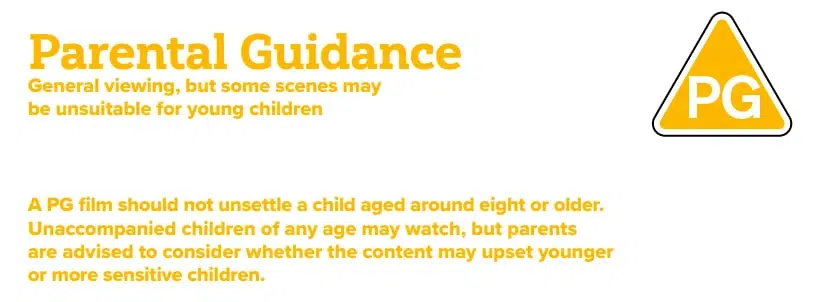Media Regulation in the UK
An introduction to the independent bodies which regulate the UK media industries.
Introduction
Governments have always used regulation to maintain standards in the provision of public service broadcasting and to protect audiences from harmful and offensive material. Regulation can also influence the ways markets operate and encourage innovation in the cultural industries.
Companies might be asked to self-regulate and follow a voluntary code of practice, or politicians might force them to comply with mandatory rules and regulations. Both approaches are used in the UK to regulate media institutions and the products and services they offer to consumers.
The following summaries of various regulatory bodies in the UK will help develop your awareness of this important context in media studies.
Contents
Ofcom
The Office of Communication is responsible for the management and regulation of communication services in the UK, such as your broadband and mobile networks. They also regulate television and radio broadcasts to ensure audiences are not exposed to inappropriate and offensive content. If you have a complaint about a particular programme, Ofcom will listen to your concerns.
The regulator is independent and funded by the companies it scrutinises.
In our overview of media convergence, we explored the shifting patterns of media ownership and the rise of powerful conglomerates. Ofcom was created in 2003 to regulate these new cross-media companies.
The watchdog’s remit now includes tacking harmful content online and protecting children and vulnerable people when they are using the internet. They are able to take action if online platforms don’t have effective systems and process in place to protect the user.
The British Board of Film Classification
The British Board of Film Classification (BBFC) is the independent body responsible for the classification of the films and trailers played in cinemas or distributed on physical media, such as DVDS, and streamed over the internet. Their job is to protect children and vulnerable adults from unsuitable media content. The ratings also empower audiences to make informed choices about the films they want to watch.
When classifying a film, the compliance team look for dangerous behaviour, including the glamorisation of violence or the detailed portrayal of criminal activity. They will also consider the use of offensive language and abusive behaviour when making a decision. If a producer wants to achieve a certain rating, the BBFC might suggest cuts and other actions so the film meets their guidelines.

Films with a PG rating do not contain any detailed depictions of potentially dangerous behaviour which young people are likely to copy. There is no glamourisation of violence or focus on anti-social behaviour. If there is any “bad” language, it will be mild and infrequent. And the sense of threat and horror will not be intense enough to upset most children.
By contrast, a film with an 18 rating will feature detailed portrayals of violent and criminal behaviour, contain lots of foul language, and show some explicit images. Obviously, this sort of content is unsuitable for younger views, so the ratings are designed to protect them from the inappropriate material.
If you want to know more about their decision making process, the regulator keeps the public up to date with the release of very informative and engaging podcasts.
Pan European Game Information
PEGI provides age classifications for video games to help consumers, especially parents, to make informed decisions about which games are suitable for certain ages. They consider the age suitability of the content and not the level of difficulty of the game. This really irritating video from the regulator helps explain the process.
Before a game is released, the publishers assess the content of their games and submit their findings to PEGI. The regulator offers a provisional age rating and then thoroughly reviews the content. The Video Standards Council (VSC) administers the PEGI ratings in the UK, but also takes care of the games rated 16 and 18 across Europe.

A PEGI 3 game will not feature any inoffensive or inappropriate content whereas a PEGI 7 game will contain scenes and sounds that will be frightening to younger children. A PEGI 18 classification refers the game which glamourises gross violence, illegal activity and more explicit material. The content descriptors also help consumers make more informed decisions about which games they want to play.
The mobile gaming industry is incredibly lucrative. However, it is impossible for PEGI to offer pre-release verification of the thousands of products released every day around the world and available to download to any phone. The International Age Rating Coalition (IARC) provides a solution to this globalised market. Publishers still complete a questionnaire about their product’s content and interactive elements, but the rating and license is created automatically, and they can immediately sell their game on the various storefronts, such as the App Store and Google Play.
The Independent Press Standards Organisation
IPSO is the independent regulator of most newspapers and magazines published in the UK. There is an Editor’s Code of Practice which outlines the rules the Press must follow. For instance, reports should be accurate and not mislead the public. Although ISPO is there to protect the freedom of speech, they can also demand editors justify intrusions into any individual’s private life without their consent. Journalists are not allowed to engage in intimidation and harassment of sources, or obtain material acquired by illegal means, such as hidden cameras or the theft of documents. The Press should also act in the public interest.
IPSO take action if these standards are not met and are able to fine publishers up to £1m for series cases or a systemic breach of the code. They regularly ask the Press to publish adjudications and corrections if their stories were inaccurate, intrusive, or inappropriate. You can find plenty of examples in their rulings and resolutions section of their website. Scroll down and you might find some familiar names from the entertainment industry.
Advertising
The Advertising Standards Authority (ASA) regulates advertising in the UK. The independent body ensures advertisers, agencies and media owners follow the rules set out by the Committee of Advertising Practice (CAP). Their team of advisors respond to the concerns and complaints from consumers and are able to ban advertisements which are misleading and irresponsible. In 2020, the ASA resolved 36,342 complaints which related to 22,823 ads.
Final Thoughts
In Media Regulation: Governance and the Interests of Citizens and Consumers, Sonia Livingstone and Peter Lunt (2011) identified the dilemma at the centre of regulation: should politicians try to protect its citizens from harmful content, manipulative marketing and fake news, or should audiences be free to make their own choices regarding which media products they want to consume?
Regulators have to respond to the challenges presented by a globalised media. Although governments introduce legislation to regulate content, it is increasingly difficult to enforce the law because lots of the products we consume are developed in other jurisdictions. For instance, one of Ofcom’s important roles is to protect our privacy, especially on social media, but its powers are restricted because the conglomerates which own those platforms are located outside the UK.
The way audiences engage with the media is also an issue. Textual poachers are relentlessly appropriating original material, and an immeasurable amount of fresh content is being uploaded by prosumers every day. Regulators cannot be expected to monitor user-generated content before it is released online. Publish first, regulate second.
More from Media Industries
The media industry shapes what content gets made, who controls it, and how it reaches audiences. The following posts explore the structures, economics, and power behind media production.







